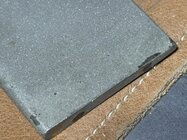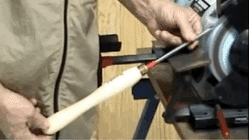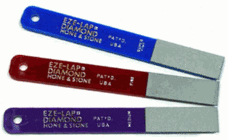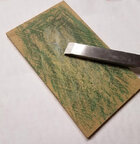Just because I have a hankering to try something new in the shop, I'm wondering about different ideas for hand honing tool edges between trips to the grinding wheel.
I've got a couple medium India slip stones I've used in the past but I wasn't very fond of them. And I've used several DMT "credit card" diamond hones but they seem to not last very long.
If you touch up turning tool edges by hand, what are you using?
For bench chisels and plane blades, I'm going to ween myself off diamond hones (300, 600, and 1200 grit, all 8"x3" plates) and move to Shapton Kuromaku water stones in 1000, 5000, and 8000 grit. I think this stone in 1000 grit would be great for touching up turning tools, but it only comes 8x3x5/8", a bit too large/cumbersome for holding by hand on a turning tool at the lathe. Anyway... what sorts of stones (regardless of what they are made of) are you using?
An article (free to read thru the end of the month) about the Shapton Kuromaku as bench stones for chisels and plane irons. https://neversponsored.substack.com/p/shapton-kuromaku-stones-the-only
I've got a couple medium India slip stones I've used in the past but I wasn't very fond of them. And I've used several DMT "credit card" diamond hones but they seem to not last very long.
If you touch up turning tool edges by hand, what are you using?
For bench chisels and plane blades, I'm going to ween myself off diamond hones (300, 600, and 1200 grit, all 8"x3" plates) and move to Shapton Kuromaku water stones in 1000, 5000, and 8000 grit. I think this stone in 1000 grit would be great for touching up turning tools, but it only comes 8x3x5/8", a bit too large/cumbersome for holding by hand on a turning tool at the lathe. Anyway... what sorts of stones (regardless of what they are made of) are you using?
An article (free to read thru the end of the month) about the Shapton Kuromaku as bench stones for chisels and plane irons. https://neversponsored.substack.com/p/shapton-kuromaku-stones-the-only




